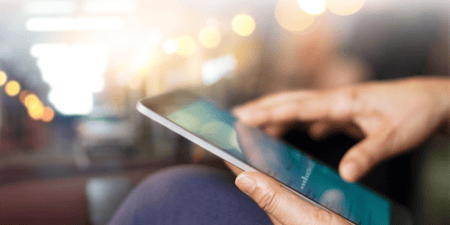 Whether you’re splitting a restaurant bill with friends, making a purchase, or helping out a family member, sending money to another person is incredibly easy these days thanks to an ever-growing array of online payment tools. But how safe is it to send money online?
Whether you’re splitting a restaurant bill with friends, making a purchase, or helping out a family member, sending money to another person is incredibly easy these days thanks to an ever-growing array of online payment tools. But how safe is it to send money online?
Most of today’s online payment options fall into three categories. Let’s take a closer look at each of them:
Financial institutions: If you have an online account with a financial institution, you can probably use it to send money to someone. This is easiest and fastest when the other person has an account at the same place, but you can usually send money to accounts at other institutions, too.
Wire transfers: With a wire transfer service like Western Union or MoneyGram®, you can go online and send money to a long list of domestic and international locations. These services typically charge a fee for each transfer.
Peer-to-peer payments: Peer-to-peer payment options include smartphone apps like Zelle, services like PayPal, and platform-specific offerings like Apple Cash and Google Pay. To use a service like this, you typically link it to your online account or credit card. For the transfer to work, both you and the recipient will likely need to have an account with the service you’re using. You may also be subject to maximum transfer limits.
Security measures to look for
All of these online payment types employ a variety of security measures to keep transactions safe. Financial institutions and some peer-to-peer apps send and receive payments via the Automated Clearing House Network, or ACH. This encrypted system offers protections in case you’re the victim of fraud. As an extra layer of protection, Kiplinger financial writer Lisa Gerstner notes peer-to-peer apps let you send and receive money without sharing any personal data or account information beyond an email address, phone number, or user ID.
Whether you’re making payments via a financial institution or a peer-to-peer payment app, it’s worth making sure that you have access to multiple security tools. Bankrate finance expert Holly Johnson notes common safety features include multi-factor authentication and notifications for transactions and suspicious activity. And if you’re making payments on a smartphone, you’ll likely have the option to set up fingerprint or facial recognition as an extra layer of security.
Safety begins with you
If you stick to trusted, highly rated apps, services, and financial institutions for sending money online, your security risks should remain low. However, even the most secure option is only as strong as your personal online safety habits. Maintaining strong and unique passwords, setting up multi-factor logins, using only secured Wi-Fi networks, and staying alert for scams and viruses will help you make safe online payments. It’s also vital to confirm who you’re paying — if you send money to the wrong person or to an imposter, Gerstner warns that some services may not be able to cancel payments or recover your money.
Sending money online is usually as safe as it is convenient — as long as you stay alert. Just be sure to research tools and services carefully before you use them, take the proper online safety and privacy precautions, and watch for common fraud and identity theft schemes.
The Safest Ways to Send Money Online
Categories: Financial Education
The content on this site is intended for informational purposes only and should not be considered accounting, legal, tax, or financial advice. First Federal Bank recommends that customers conduct their own research and consult with professional legal and financial advisors before making any financial decisions. Links to third-party websites may be provided for your convenience; however, First Federal Bank does not guarantee the reliability, accuracy, or safety of the information, products, or services offered on these external sites. We are not liable for any damages resulting from the use of these links, and we do not investigate, verify, or endorse the content or opinions expressed on any third-party sites. NMLS # 408902.